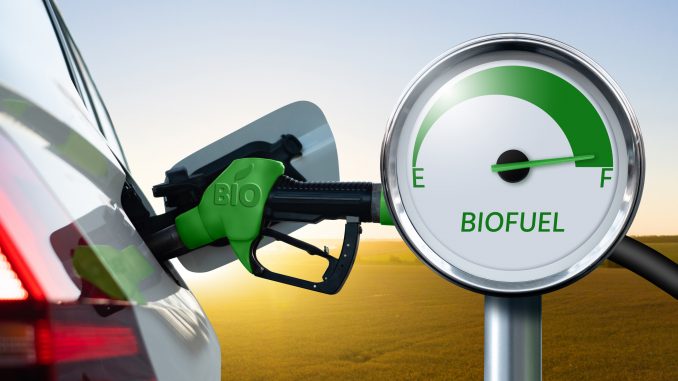
Yarrowia lipolytica is a non-pathogenic obligate aerobic yeast species that belongs to the family Dipodascaceae within the phylum Ascomycota. It is an industrially important microorganism known for its unique metabolic capabilities and versatility in various biotechnological applications (Barth & Gaillardin, 1996; Nicaud, 2012). Yarrowia lipolytica is commonly found in natural environments such as soil, water, and various types of decaying organic matter. It is most commonly associated with olive oil and was isolated originally as Candida lipolytica.
Classification and Characteristic
Yarrowia lipolytica is a non-spore-forming yeast that is characterized by its ability to utilize a wide range of carbon sources, including hydrocarbons and lipids. It is a dimorphic yeast, meaning it can exist in both yeast-like and filamentous forms. Morphologically, it appears as oval to elongated cells that reproduce by budding.
Lipid Metabolism
Yarrowia lipolytica has a remarkable ability to metabolize lipids and hydrocarbons, making it of significant interest in lipid bioconversion processes. It can utilize fatty acids and triglycerides as carbon sources, and through its lipase and esterase enzymes, it can break down lipids into glycerol and fatty acids. This metabolic capability has applications in the production of biodiesel, oleochemicals, and lipid-based bioproducts
One of the most important applications is the fermentation of oily hydrophobic feedstocks especially waste cooking oil and of other fatty acids (Liu et al., 2021).
Lipase Production
Y. lipolytica produces both extra- and intracellular lipases. There are 25 putative lipases in this yeast’s genome. Lipase production depends on a host of factors: environmental and experimental.
Production of Value-Added Products
Yarrowia lipolytica has been extensively studied for its potential in producing various value-added compounds. It can produce high-value lipids, such as omega-3 fatty acids, which have nutritional and health benefits. Additionally, it has been engineered to produce other compounds, including organic acids (such as citric acid), biofuels (such as fatty acid methyl esters), enzymes, and recombinant proteins.
A range of substrates have been examined for the production of lipids. A number of these are byproducts from other industries.
(1) molasses and crude glycerol with different levels of oxygenation (Rakicka et al., 2015).
Bioremediation
Yarrowia lipolytica has the ability to degrade and assimilate a wide range of hydrocarbons and pollutants. It has been studied for its potential in bioremediation applications, where it can contribute to the cleanup of contaminated environments, such as oil spills and wastewater treatment.
Genetic Tools and Engineering
Yarrowia lipolytica possesses genetic tools and molecular techniques that facilitate its genetic manipulation. This yeast has a fully sequenced genome, and genetic engineering approaches have been employed to modify and optimize its metabolic pathways for desired product synthesis. The availability of these tools and techniques makes this particular yeast a promising candidate for metabolic engineering and synthetic biology applications.
Food and Feed Applications
Yarrowia lipolytica is considered safe for human consumption and has been used in various food and feed applications (Zinjarde, 2014). It can produce enzymes and flavour compounds, and its ability to metabolize lipids makes it suitable for improving the nutritional profile of foods and animal feed.
Lactones, especially γ-decalactone has been explored very thoroughly (Waché et al., 2001; Braga & Belo, 2015; 2016). This is produced from ricinoleic acid.
Research and Future Perspectives
Ongoing research on Yarrowia lipolytica focuses on expanding its metabolic capabilities, improving its performance in lipid bioconversion processes, and understanding its cellular physiology and regulatory mechanisms. Further advancements in genetic engineering, process optimization, and strain development are expected to enhance its potential for industrial applications.
Yarrowia lipolytica represents a versatile microorganism with numerous biotechnological applications. Its unique metabolic capabilities, ability to utilize diverse carbon sources, and genetic tractability make it a valuable candidate for sustainable bioprocesses and the production of high-value compounds.
References
Barth, G., & Gaillardin, C. (1996). Yarrowia lipolytica. Nonconventional Yeasts in Biotechnology, 1, pp. 313-388.
Biu, N., Soong, Y. H. V., Mirzaee, I., Olsen, A., Yu, P., Wong, H. W., & Xie, D. (2021). Biomanufacturing of value‐added products from oils or fats: A case study on cellular and fermentation engineering of Yarrowia lipolytica. Biotechnology and Bioengineering, 118(4), pp. 1658-1673
Braga, A., & Belo, I. (2015). Production of γ‐decalactone by Yarrowia lipolytica: insights into experimental conditions and operating mode optimization. Journal of Chemical Technology & Biotechnology, 90(3), pp. 559-565.
Braga, A., & Belo, I. (2016). Biotechnological production of γ-decalactone, a peach like aroma, by Yarrowia lipolytica. World Journal of Microbiology and Biotechnology, 32(10), pp. 169.
Nicaud, J. M. (2012). Yarrowia lipolytica. Yeast, 29(10), pp. 409-418
Rakicka, M., Lazar, Z., Dulermo, T., Fickers, P., & Nicaud, J. M. (2015). Lipid production by the oleaginous yeast Yarrowia lipolytica using industrial by-products under different culture conditions. Biotechnology for Biofuels, 8(1), pp. 104.
Waché, Y., Aguedo, M., Choquet, A., Gatfield, I. L., Nicaud, J. M., & Belin, J. M. (2001). Role of β-oxidation enzymes in γ-decalactone production by the yeast Yarrowia lipolytica. Applied and Environmental Microbiology, 67(12), pp. 5700-5704
Zinjarde, S. S. (2014). Food-related applications of Yarrowia lipolytica. Food Chemistry, 152, pp. 1-10
Leave a Reply